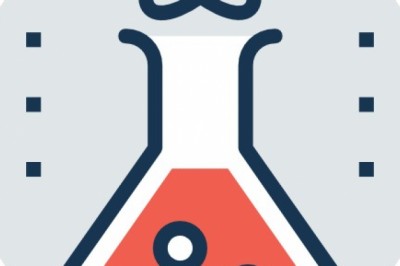views

A three step process to create and enable an engaging learning design for the learners…Hiperlearn.com
The guiding principle to keep in mind across learning programmes and processes is that human learning is affective in nature: it is a process which fundamentally engages our emotions. Thus, components or programmes which aim to separate emotions from the learning process, are also highly sub-optimal in delivering effective learning and performance outcomes. For more on this topic, please check out our two-part series on the importance of affect in learning. (Part I; Part II)
When we recognize that learning is affective, we also recognize that every individual’s learning will be somewhat idiosyncratic, because every human being has had different experiences and brings different emotional worlds to the table. Thus, their experiential pathways towards learning concepts might be different. In delivering learning design, we have to be inclusive towards these idiosyncrasies.
In traditional learning interventions and curriculum design, the focus has been on one-size-fits-all “user” experience, as opposed to personalized “human” experience. With advances in learning and development research and technology, this does not necessarily need to be the case. We can, and should, strive towards keeping each unique human at the center of their learning. But how are we to achieve this level of personalization?
In order to do this, learning and development professionals can follow a simple three-step process: create the learning game that suits the human the most, engage them with memorable events during the game to maximize learned experiences, and then deliver personalized feedback afterwards.
We can do this for each learner in the following way: first, by constructing the optimal learning pathway through gamified learning, second, by designing memorable “in-game” events by interspersing modalities, and then third: by delivering personalized analytics. Through this three-stage process, we ensure we provide the required elements for their learning: a learning pathway constructed for their personal needs, engaging affect at regular intervals along their learning path, and delivering learning feedback which is tailored to them – and only them. This ensures affective and humanized engagement across the learning process.
However, at each step, there are a few details that we have to be mindful of, so that the human-centeredness of the process can remain steady at every turn.
At the first step, most L&D practitioners would agree that gamification is the best way to ensure “flow”-based learning design: it is a learning design wherein we are optimally engaged by the learning materials: they keep the optimal balance between our skills and our challenges.
But we all have different needs, competencies, and have learnt different skills to varying skill depths. Thus, the game should start from a different starting point for each of us. A linear one-size-fits-all curriculum approach to delivering learning and training rarely delivers effective outcomes. It is more important to deliver highly focused and tailored “micro”-modules, suggest personalized learning pathways based on the individual’s recorded learning behaviour and organizational goals, and supply the learner with a broad canvas for learning exploration.
At the second step, since learning is most engaging when there is a plethora of memorable events, it becomes extremely critical for course designers to engage with the multimodality of learning resources that we have on offer today. Video, images, reading passages, short quizzes, long response questions, practice(s), simulations, podcast materials, forum discussions, practice scenarios, and live scenarios: all of these should be strategically included and interspersed within the learning process. Moreover, when participation and behaviour across multimodal scenarios is recorded, educators are then better able to predict performance outcomes, and are better able to iteratively refine learning/training programmes. It also facilitates the early detection of individuals who might be falling by the wayside in the learning process, thus, helping to create a more inclusive learning process.
At the third step, when we deliver learning analytics, it becomes important to help show the learner their learning behaviour, tendencies, and their progress. But perhaps just as importantly, the analytics need to remind the learner how their learning progress is helping them improve their performance, advance their career progression, helping them become future-ready, and helping them achieve their self-determined goals. That is where the analytics stop being just regular “user-friendly” feedback, and start being emotionally inclusive and human-centric.
When learning programmes are personalized, gamified, and factor in our human psychology, learning becomes an engaging — and deeply fulfilling opportunity. As learning and development professionals, we should strive to create systems and processes which are emotionally and socially inclusive and foster a passionate engagement with lifelong learning and self-improvement.












